Peter Sagan: Nobody's beaten on the start line
Slovakian road race champion on way back to form after illness
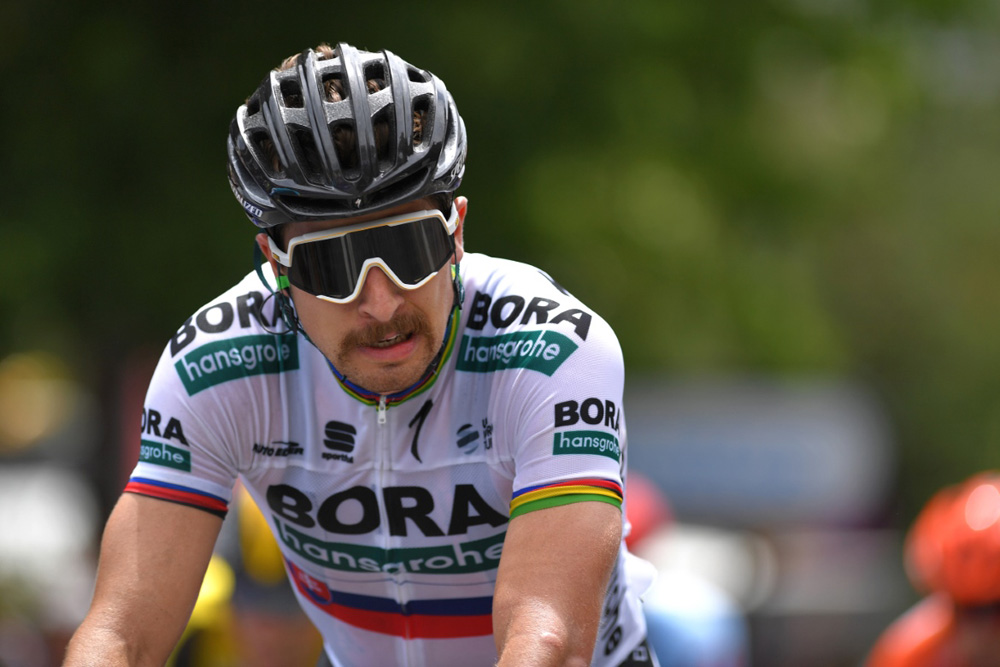
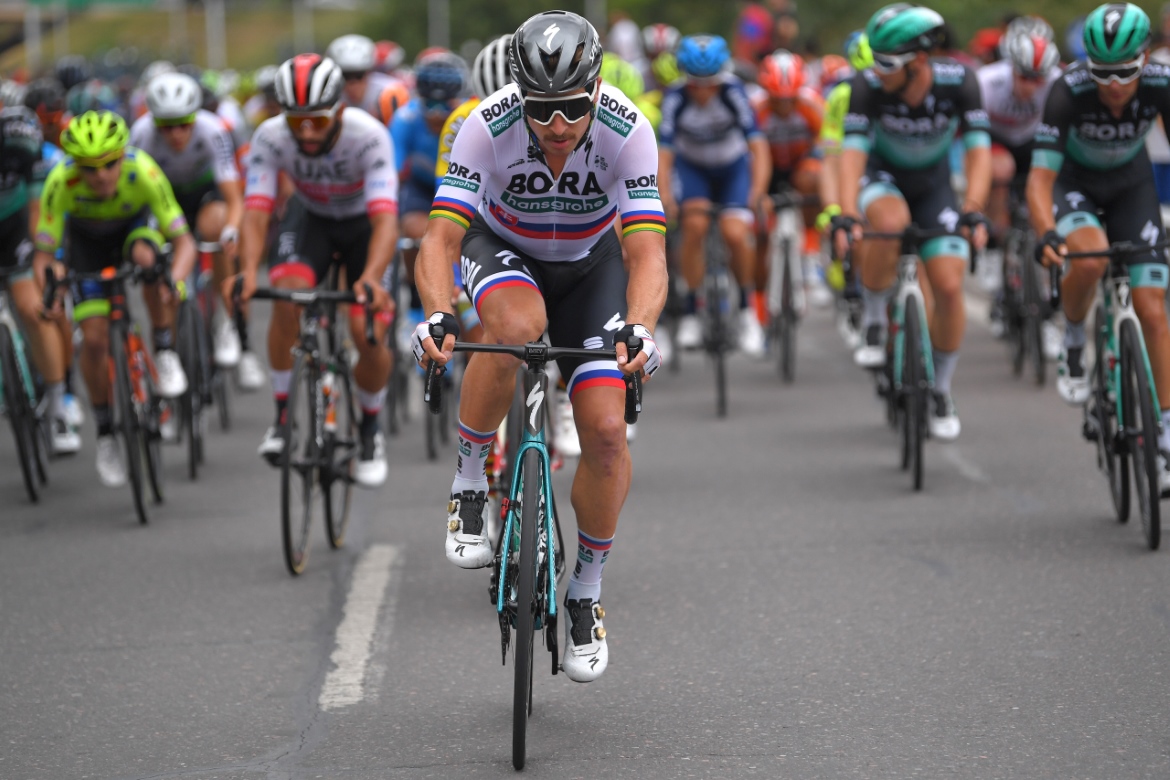
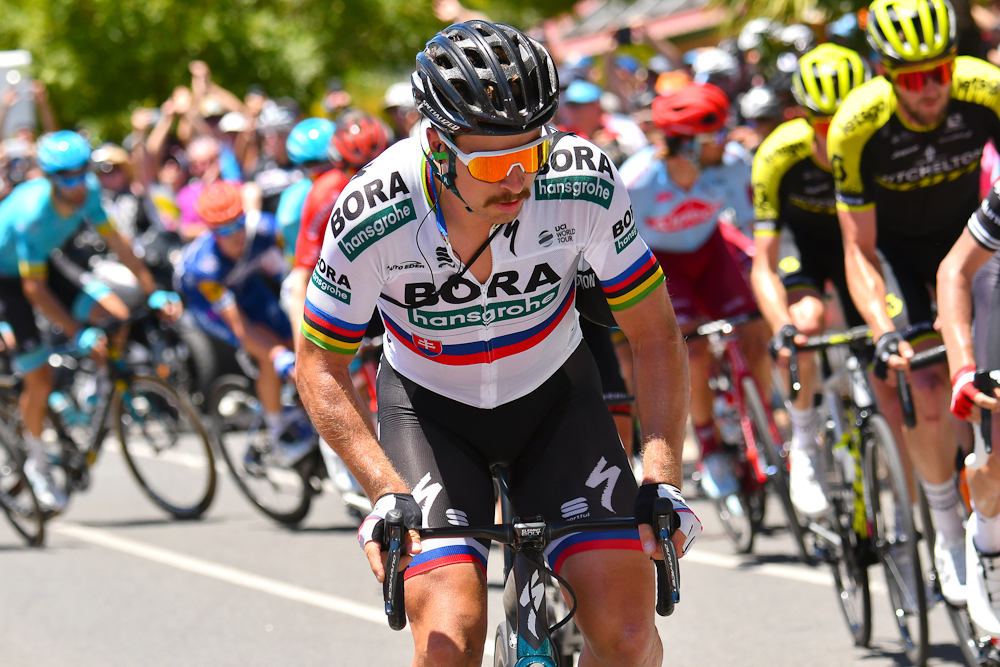
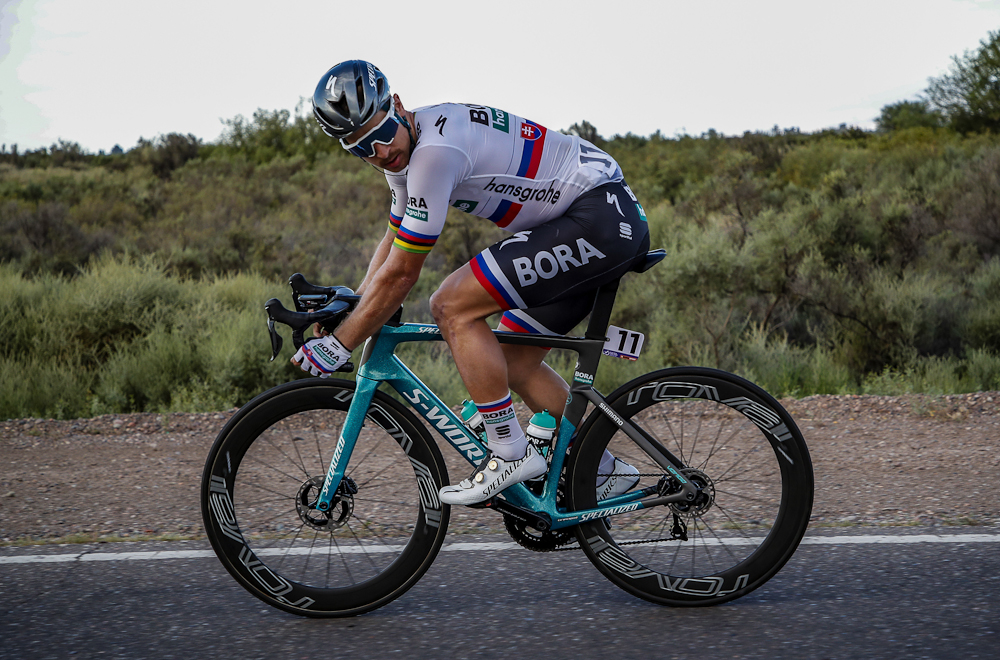
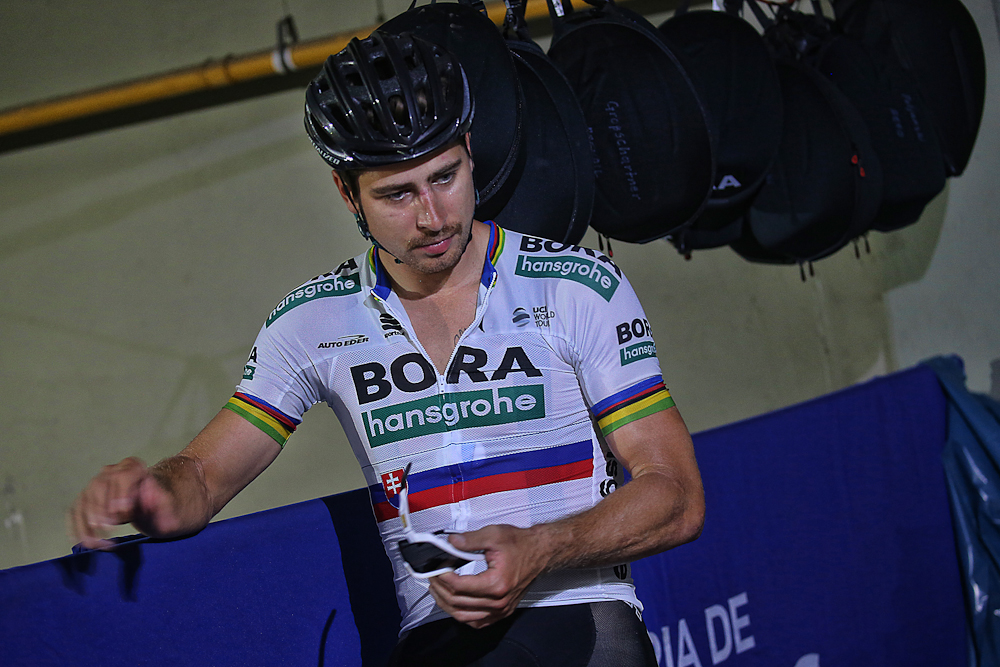
On Wednesday evening, after his first race day in over a month, Peter Sagan (Bora-Hansgrohe) sat down with reporters, including Cyclingnews, and spoke at length about his return from illness, about targeting Milan-San Remo, and about the new generation of riders who are coming through and ready to usurp him.
Oss: The positive energy around Peter Sagan makes the difference
Sagan and Gaviria: Good friends and sprint rivals
Sam Bennett: Sagan leading me out is really cool but it adds pressure
Peter Sagan's advice to Remco Evenepoel: Just be yourself
Stomach virus hits Peter Sagan's return to racing at Tirreno-Adriatico
It was a baptism of fire for the three-time world champion as he returned to action at Tirreno-Adriatico, his first outing since the Vuelta a San Juan. Having spent much of last month training at altitude at Sierra Nevada before getting sick for a week – and losing four kilos, he told reporters – the opening team time trial stage at Tirreno saw Sagan having to avoid an errant spectator on the course, who took down his teammates Rafal Majka and Oscar Gatto.
"Today I survived – despite what happened during the race," said Sagan. "I was pretty bad these last six days in Sierra Nevada. I had to stay in my room, sick, and couldn't ride, and then yesterday [Tuesday] I did three hours, easy, and then the team time trial today. But we'll see how it goes day-by-day here at Tirreno.
"I've lost a lot of form since Argentina without racing. I was training hard in Sierra Nevada, but, since getting sick, I've lost a little bit. But I'm recovering now, and hopefully I'll get better. There's still a long time to go until the Classics. I'm here for a week, and then from Milan-San Remo until Paris-Roubaix it's another three weeks, and then another two weeks after that until Liège-Bastogne-Liège, so there's still time."
Targeting San Remo
While listing three of his main targets for this spring – San Remo, Roubaix and Liège – it's clear that there's no sign of panic from Sagan.
"I'm not worried about San Remo," he admitted, "because even if you're in the best shape, it's not 100 per cent certain that you're going to be good.
"You hit the Poggio climb, and whoever's still there is still there. There might be attacks, there might not be; it always depends on the wind. If there's a headwind, then you can't get away on the Poggio. You can't gain time on the descent, even if you take a lot of risks, and then if a team's got several guys, then they can chase you down if you try an attack. So many things can happen at Milan San Remo.
Get The Leadout Newsletter
The latest race content, interviews, features, reviews and expert buying guides, direct to your inbox!
"You can only be your best at the race and accept what happens. You can't be frustrated by losing a bike race, or else you'd go crazy. I'll do my best at San Remo, and of course I'd like to win it, but out of 200 riders, only one can win. Let's see. I'm just looking forward to seeing how I feel, and seeing how I match up against my rivals."
What's almost certain is that Sagan is going to come up against a very strong Deceuninck-QuickStep squad in the coming races.
"Yes – they're very strong," he agreed. "But what we're seeing now is maybe going to be different in two or three weeks' time. I'm not worried about it, and, at the end of the day, the races are going to start and they're going to finish."
As for how he and his Bora teammates might go about trying to beat Patrick Lefevere's team, Sagan refused to be drawn.
"I'll think about it during the races – not before," he said. "We've still got races like Gent-Wevelgem to come yet, so we'll see. And we also have a strong team, and every race can be different. We have to be ready, though.
"It doesn't surprise me how well they're going, though. They're a Belgian team and the main goal for them is always the Classics. They've got a lot of good riders, and it's a chance for them to take a lot of points at the start of the season, and so it's no surprise. Some teams build themselves for the GC, some for the Classics; every team has different goals."
Taking on the young guns
At 29, Sagan is arguably enjoying – or possibly still approaching – the best years of his career, having turned pro with Liquigas in 2010. Asked about what point he thinks his career's reached – is he in the autumn years, or still in summer? – Sagan replied that he hoped he was only in about July.
"But perhaps I'm in September," he laughed. "I feel good, but every year's more difficult. There are always more things to do: there are more races, people want more interviews... Cycling's beautiful when you start to win. It's easy to reach a certain level, but it's much more difficult to stay there. I didn't realise that five or six years ago when I first started to win, but now I do.
"Now I understand it because I've got more responsibility. My body's getting older, and each year it takes longer to recover. Cycling's becoming more professional, so you have to do more. You have to look after yourself and work all the time: do stretching, recovery; you can't stop from when you wake up to when you go to bed."
Despite still being in his 20s – and Sagan won't hit 30 until January next year – the Slovakian nevertheless appears to have an old head, and reflected on the turnover of pros and the process of being replaced when he no longer has what it takes to win races.
"You can't race all your life. That's sport," he said. "Each one of us goes as far as we can, and then we reach the end. Guys like André Greipel [Arkea-Samsic] are still racing on, but young guys are coming through all the time as well. That's happening to him and it will happen to me – and it happens to everybody.
"Now there's Elia Viviani [Deceuninck-QuickStep] and Fernando Gaviria [UAE Emirates], and Caleb Ewan [Lotto Soudal] is coming through, too. Alvaro Hodeg, too, for Deceuninck. He's young and fast, so you'll see in a couple of years that he'll win races. He needs to learn and gain experience in how to manage things, and stay calm. You always need time to learn.
"I can remember that I crashed the first time I led out a sprint for Liquigas. Young riders are coming through, but they still need time. We've got to give them that."
With so many younger sprinters stepping up, does it perhaps spell the end of the line for elder statesmen such as Greipel and Dimension Data's Mark Cavendish?
"We can't say that they're done at all," said Sagan. "Mark rode in Argentina [at the Vuelta a San Juan] and then at the UAE Tour. But how many times have we seen him struggle at the start of the year and then go on to win four of five stages at the Tour de France? The season's long, and you can't underestimate anyone. Nobody's beaten on the start line."